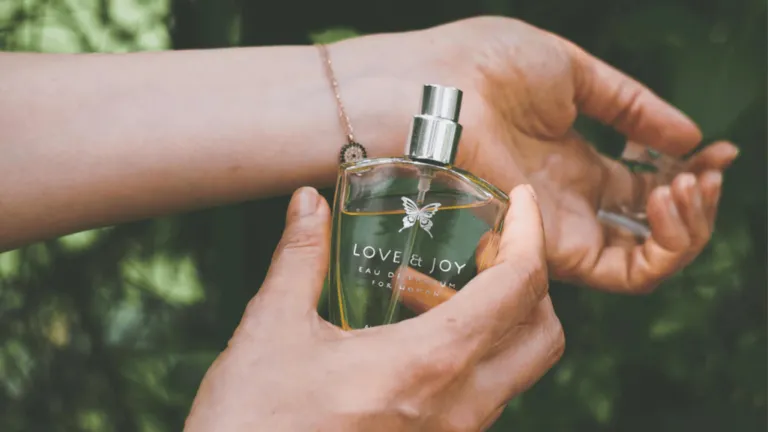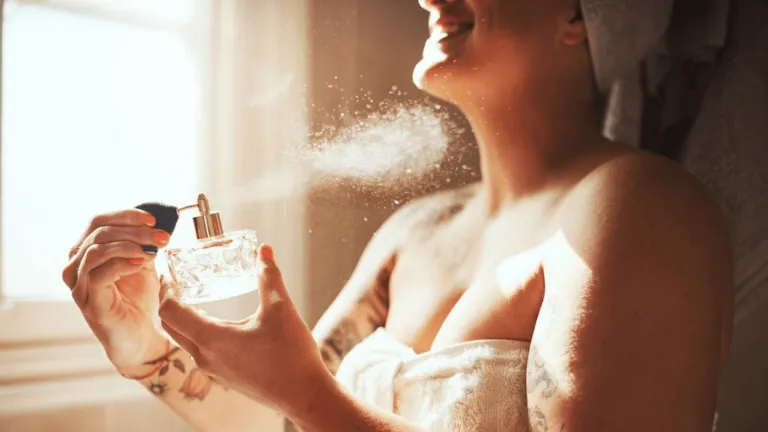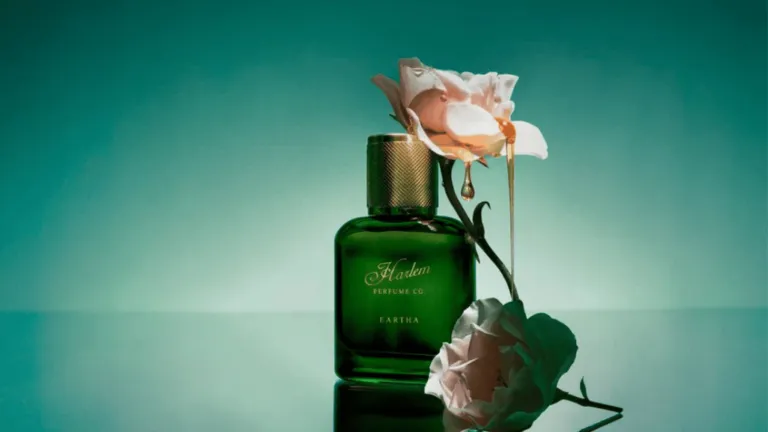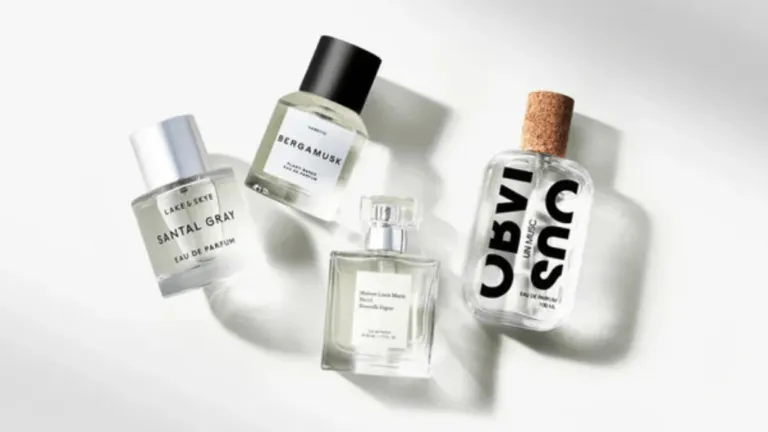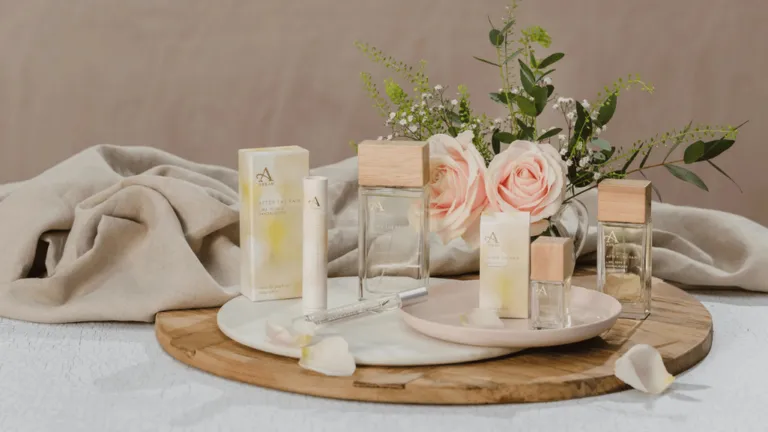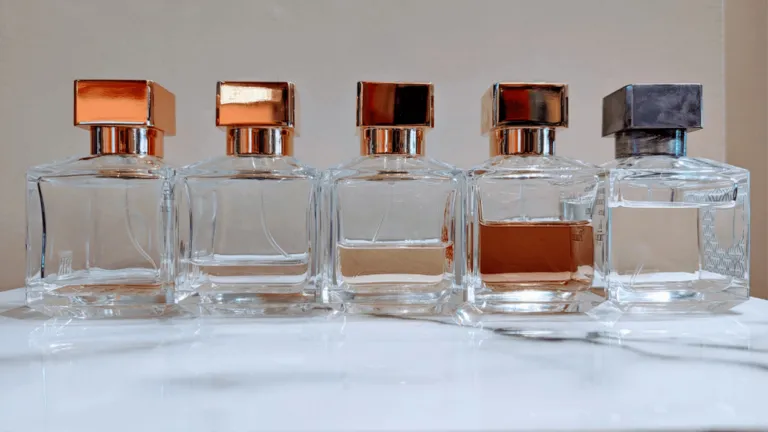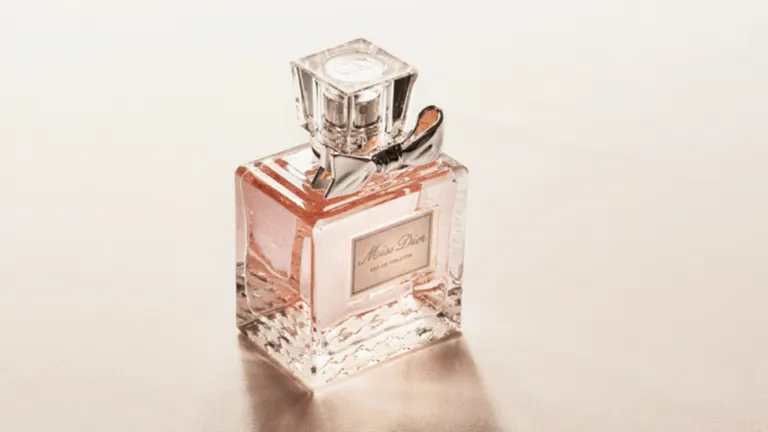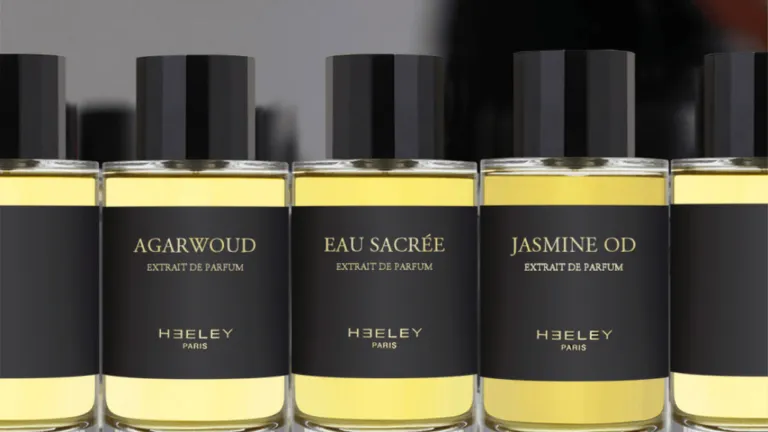When it comes to fragrances, the terms “De toilette vs de parfum” are often used interchangeably. However, these terms actually refer to different concentrations of fragrance oils in a product. Understanding the differences between eau de toilette and eau de parfum can help you make an informed decision when choosing a fragrance that suits your preferences and needs.
Let’s dive into the details of what sets these two fragrance types apart:
Key Takeaways:
- Eau de toilette and eau de parfum are terms used to describe the concentration of fragrance oils in a product.
- Eau de toilette typically has a fragrance concentration of 5% to 15%, while eau de parfum has a concentration of 12% to 18%.
- The concentration of fragrance oils affects the longevity, scent, and price of the fragrance.
- Eau de toilette is generally used as a daywear fragrance and lasts around two to three hours.
- Eau de parfum has a higher concentration and is considered a more long-lasting option, lasting around four to five hours.
Now that you have a better understanding of the differences between eau de toilette and eau de parfum, you can confidently choose the fragrance that aligns with your preferences and the occasion. Whether you prefer a lighter scent for everyday wear or a more intense and long-lasting fragrance for special occasions, there is a perfect option out there for you.
de toilette vs de parfum
The term fragrance is a broad and encompassing term that refers to any pleasant scent. It can be used to describe various scented products, from perfumes to colognes and everything in between.
Perfume is a specific type of fragrance that typically features a higher concentration of essential oils. Known for its long-lasting and intensified scent, perfume is designed to be worn by both men and women. It is a luxurious and sophisticated choice that exudes elegance.
Cologne, on the other hand, is often associated with fragrances that have a lower concentration of essential oils. Traditionally marketed towards men, cologne is designed to offer a refreshing burst of scent, making it a popular choice for daily wear or casual occasions.
While perfume and cologne are commonly distinguished by their concentration of oils, it’s important to note that the terms can be used interchangeably. Ultimately, the choice between perfume and cologne comes down to personal preference and the desired effect.
When exploring fragrance terminology, it’s also worth mentioning that scents are not limited to specific genders. While certain fragrances may be marketed towards men or women, there is no strict rule dictating who can wear what scent. It is all about finding a fragrance that resonates with your individual style and personality.
Perfume for Men and Cologne for Women?
 Breaking traditional gender norms, many fragrances today challenge the notion of gender-specific scents. Perfume intended for men and cologne marketed towards women have gained popularity in recent years. These fragrances are designed to appeal to a broader audience and promote inclusivity within the perfume industry. So, feel free to explore and experiment with different scents, regardless of societal labels.
Breaking traditional gender norms, many fragrances today challenge the notion of gender-specific scents. Perfume intended for men and cologne marketed towards women have gained popularity in recent years. These fragrances are designed to appeal to a broader audience and promote inclusivity within the perfume industry. So, feel free to explore and experiment with different scents, regardless of societal labels.
Understanding Eau de Toilette

Eau de toilette is a popular type of fragrance with a fragrance concentration ranging from 5% to 15%. It is commonly used as a daywear fragrance, perfect for casual and everyday use. The term “eau de toilette” originates from the French phrase “faire sa toilette,” meaning to get ready.
Eau de toilette is known for its lighter scent compared to other fragrance types. It offers a refreshing and invigorating experience, making it ideal for daytime wear. The lower fragrance concentration ensures that the scent is not overpowering, providing a subtle and pleasant aura.
When applied, eau de toilette typically lasts for about two to three hours on the skin. Its longevity may vary depending on factors such as body chemistry, climate, and application technique. As a daywear fragrance, eau de toilette is designed to provide a burst of freshness and fragrance throughout the day, without being too heavy or overwhelming.
Many popular perfume brands offer their signature scents in eau de toilette versions, allowing individuals to enjoy their favorite fragrances with a lighter concentration. These fragrances often feature a blend of citrus, floral, and woody notes, creating a balanced and versatile aroma.
For those who prefer a fragrance with a moderate level of fragrance concentration and a scent that is suitable for daytime occasions, eau de toilette is a popular choice. Its subtle yet distinct scent profile adds a touch of elegance to any outfit or daily routine.
There is something timeless and refreshing about wearing an eau de toilette fragrance. Its ability to evoke a sense of confidence and sophistication makes it a versatile choice for various settings and occasions.
Understanding Eau de Parfum
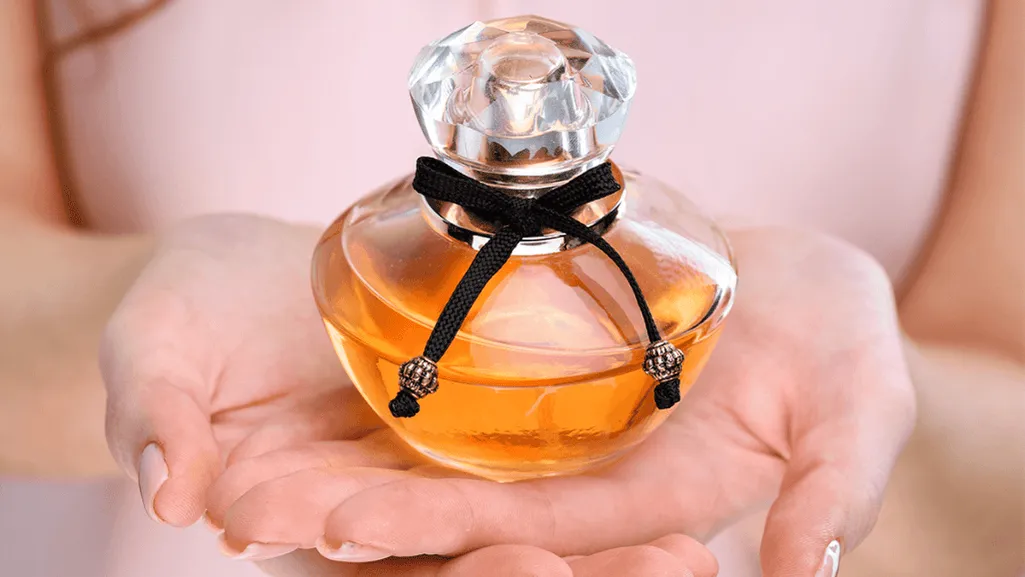
Eau de parfum is an exquisite fragrance option with a higher fragrance concentration compared to eau de toilette. Typically ranging from 12% to 18%, this increased concentration provides a long-lasting fragrance experience that can linger on your skin for up to four to five hours.
Compared to eau de toilette, eau de parfum is known for its captivating and intense scent that can make a lasting impression. Its higher concentration of fragrance oils ensures that the scent remains vibrant and noticeable throughout the day or evening.
Genuine perfume aficionados often choose eau de parfum for special occasions or when they desire a fragrance that is more reliable and longer-lasting. The higher concentration makes it an excellent option if you’re looking to make a statement with your scent.
Whether you’re attending a formal event, going on a romantic date, or simply want to indulge in a luxurious fragrance experience, eau de parfum offers the perfect blend of sophistication and allure. Its ability to envelop you in a captivating scent for an extended period makes it a versatile choice that transitions seamlessly from day to night.
Key Features of Eau de Parfum:
- Higher fragrance concentration of 12% to 18%
- Lasts longer than eau de toilette, typically around four to five hours
- Ideal for evening wear or special occasions
- Provides a more intense and captivating scent experience
- Offers a reliable and long-lasting fragrance option
| Eau de Parfum | Eau de Toilette |
|---|---|
| Higher fragrance concentration | Lower fragrance concentration |
| Lasts around four to five hours | Lasts around two to three hours |
| Suitable for evening wear or special occasions | Ideal for daywear |
Comparing Eau de Toilette and Eau de Parfum
The main difference between eau de toilette and eau de parfum lies in the concentration of fragrance oils. Eau de parfum has a higher concentration than eau de toilette, resulting in a longer-lasting and more aromatic scent.
Eau de toilette typically has a fragrance concentration of 5% to 15%, while eau de parfum has a concentration of 12% to 18%. This disparity in concentration greatly influences the fragrance’s development and longevity on the skin.
When comparing eau de toilette and eau de parfum, it’s important to note that the actual scent may differ, even if they share the same name. The proportion of top, middle, and base notes can be balanced differently in each version, leading to variations in the overall fragrance profile.
Choosing between eau de toilette and eau de parfum depends on personal preference and the desired intensity and lasting power of the scent. Eau de toilette is often chosen for everyday use or daywear, providing a lighter and more subtly scented experience. On the other hand, eau de parfum offers a more concentrated and intense fragrance, making it suitable for special occasions or evening wear.
| Eau de Toilette | Eau de Parfum | |
|---|---|---|
| Fragrance Concentration | 5% – 15% | 12% – 18% |
| Longevity | 2 – 3 hours | 4 – 5 hours |
| Scent Intensity | Lighter | More intense |
| Occasion/Usage | Daywear | Special occasions/Evening wear |
Exploring Other Fragrance Types
In addition to eau de toilette and eau de parfum, there are other fragrance types available that offer unique scents and concentrations. Understanding these fragrance types can help you make an informed choice when selecting a fragrance.
Eau de Cologne
Eau de cologne is a classic fragrance type with a lower concentration of fragrance oils compared to eau de toilette. Typically, eau de cologne has a fragrance concentration ranging from 2% to 4%. It is often associated with traditional recipes that use herb and citrus notes, providing a refreshing and invigorating scent experience.
Eau Fraiche
Eau fraiche is similar to eau de cologne but has an even lower fragrance concentration. Typically, eau fraiche contains between 1% to 3% fragrance concentration. This makes it a great option for individuals with sensitive skin or those who prefer a subtle scent. Eau fraiche offers a light and delicate fragrance experience that can be worn daily.
These fragrance types open up a world of possibilities for finding the perfect scent that suits your preferences and needs. Whether you opt for the long-lasting intensity of eau de parfum or the fresh simplicity of eau fraiche, there is a fragrance type for every occasion and individual.
Factors to Consider When Choosing a Fragrance
When it comes to selecting the perfect fragrance, there are several key factors to keep in mind. These factors include fragrance notes, price, longevity, and personal preference. Each of these elements plays a crucial role in finding a scent that suits your style and preferences.
Fragrance Notes
The fragrance notes of a perfume or cologne determine its overall scent profile. Fragrance notes can range from floral and citrus to woody and musky. By understanding your preferred fragrance notes, you can narrow down your options and choose a scent that resonates with you.
Price
Price is an important consideration when purchasing a fragrance. Higher-end fragrances tend to be more expensive due to their quality ingredients and craftsmanship. However, there are also affordable options available that offer excellent scent profiles. It’s essential to research different brands and compare prices to find a fragrance that fits within your budget.
Longevity
Longevity refers to how long a fragrance lingers on the skin. Some fragrances have excellent staying power and can last throughout the day, while others may fade more quickly. Consider the longevity of a fragrance based on your preferences. If you prefer a scent that lasts all day, opt for fragrances with higher concentrations of oils, such as eau de parfum.
Personal Preference
Ultimately, personal preference plays a significant role in selecting the perfect fragrance. Everyone has unique tastes and styles, so it’s essential to choose a scent that resonates with you and evokes the desired emotions. Trust your instincts and select a fragrance that makes you feel confident and empowered.
By considering these factors – fragrance notes, price, longevity, and personal preference – you can make an informed decision when choosing a fragrance that perfectly complements your style and personality. Whether you prefer a floral, fruity, or woody scent, finding the right fragrance allows you to express yourself and leave a lasting impression.
Conclusion
The distinction between eau de toilette and eau de parfum lies in the concentration of fragrance oils. Eau de toilette has a lower concentration, making it more suitable for daywear, while eau de parfum has a higher concentration, providing a longer-lasting and more intense scent. When choosing between the two, it ultimately comes down to personal preference and the occasion.
When selecting a fragrance, it is important to consider factors such as fragrance concentration, longevity, and price. Eau de toilette is a great option for those who prefer a lighter scent for daily use, while eau de parfum is ideal for special occasions or when a more powerful and lasting fragrance is desired. Additionally, it’s essential to keep in mind your budget and personal style when making a selection.
In conclusion, eau de toilette and eau de parfum offer distinct fragrance experiences based on their concentration levels. Whether you opt for a refreshing and subtle daywear fragrance or a long-lasting and intense scent, both options provide a wide range of choices to suit different preferences. So go ahead and explore the world of fragrances, taking into account your own taste, the occasion, and the desired longevity. Happy fragrance hunting!
FAQ
What is the difference between eau de toilette and eau de parfum?
The main difference lies in the concentration of fragrance oils. Eau de toilette has a lower concentration, while eau de parfum has a higher concentration.
What is the fragrance concentration in eau de toilette?
Eau de toilette typically has a fragrance concentration of 5% to 15%.
What is the fragrance concentration in eau de parfum?
Eau de parfum has a fragrance concentration of 12% to 18%.
How does the concentration affect the longevity of the fragrance?
Eau de parfum, with its higher concentration, tends to last longer than eau de toilette.
Are there differences in the scent of eau de toilette and eau de parfum?
Yes, the proportion of top, middle, and base notes can be balanced differently in each version, resulting in a potentially different scent.
What other fragrance types are available?
Other fragrance types include eau de cologne and eau fraiche.
What factors should I consider when choosing a fragrance?
Factors to consider include fragrance notes, price, longevity, and personal preference.




